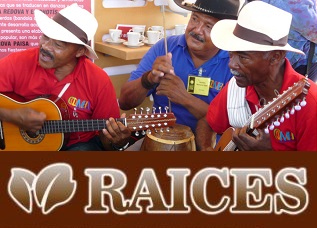Native Americans have the highest rate of diabetes among all population groups of the United States. Several community centers and indigenous health centers are seeking to fight this illness and heal the community, growing traditional herbs and fresh vegetables, cooking with old recipes from the ancestors, and teaching and practicing traditional dance. Although it is a challenge to live healthy in the heart of the city, with little access to organic food, this is a challenge that the Intertribal Friendship House in Oakland, California has decided to take on. Our reporter Zaidee Stavely visited the Friendship House and has this story.
In the parking lot of the Intertribal Friendship House, Navajo grandmother Maggie John shows off the crops she has planted: corn, tomatoes, beans, chile peppers, squash, rosemary, spearmint, sage….
JOHN: And that’s our tobacco plants, getting really big. When we have special ceremony. Another sage right there, you can use when you have a little ceremony.
In another part of the garden, Maggie’s nephew is harvesting lavender leaves to make little pillows, and lemon verbena, to make tea. In another corner, Shirley Guevara waters the tomatoes.
GUEVARA: It’s important to the community because that’s how Indian people started out, growing their own food and being part of the earth. Now living and working in the city, you’re lucky to have a garden in planter boxes.
Guevara knows first hand how difficult it is to eat healthy in the city. A few months ago, her doctor told her she had high blood pressure. Instead of taking medicine, Guevara chose to change her life: to do more exercise and eat healthier food.
GUEVARA: So I did that. But it’s expensive. It’s expensive to go to the health food store. Instead of shortening or lard or bacon grease, I had to use clarified butter. That’s like 7 or 8 dollars!
High blood pressure, heart problems, and diabetes are more common among Native Americans, and they die three times as often from diabetes than the general population.
WAGENBERG: Diabetes is a result of colonization. The government took away land and resources from the people and gave them flour, oil, and sugar.
Nicola Wagenberg works for the organization Cultural Conservancy. She says that a movement has been growing in the United States for about 15 or 20 years, to go back to the crops and recipes of the ancestors. The Tohono O´odham, in Arizona, grow a bean full of proteins, and there are indigenous people in New Orleans who make gumbo with crocodile meat, Wagenberg says.
At the Intertribal Friendship House, salt, sugar, and soda are all banned. For community lunches and dinners, folks make salads with the fresh greens from the garden. Maggie John roasts the chiles to make salsa. And in a greenhouse, she keeps the seeds.
JOHN: This is Indian corn. We dry them, then in the Springtime, in May, we plant all this corn again.
But these are not the only seeds that are cultivated in this House. Here, they also cultivate the seeds of culture.
BELLINGER: Watch the beat, guys, 2 and 4 now…
On a Thursday night, six boys and three adult men get together around a big drum, where they learn to play with Michael Bellinger. The drum teacher says the drum is an important part of the program to improve health, both physical and spiritual.
BELLINGER: The drum is the heartbeat. A lot of languages and ways have been taken away by the government. This brings all of our tribes together, born and raised here in Oakland. So all nations, all different tribes, but that drum brings us together. And you’ll see later, everybody dances to that stuff.
Music
After a dinner, a community dance begins. Men and women dance around the circle. Some women have on shawls that they extend on their backs as if they were wings.
SMALL: All of our styles have a story, and that story says something about you. The fancy shawl style of dancing is basically like a butterfly and you’re moving so freely.
Juliet Small is 18 years old and has been dancing since she was 3. She says for her, dance has a special meaning. Her grandmother, of Navajo, Apache, and Cherokee origins, came to the city under the Relocation Act of 1956, when the government offered economic incentives to those who would leave Native American reservations to assimilate. Juliet’s grandmother did not want to teach Native American culture to her children. When Juliet and her cousin became interested in dance, she says the whole community taught them. Now Juliet teaches other girls how to dance.
SMALL: And girls choose what they want to do. Either they can do the traditional style of dancing, which is more reserved and more calm, or they can do fancy shawl, and it’s more expressive and more open. Or they can do jingle, and it’s a healing dance, so they can be medicine for other people.
That healing power of dance and coming together in community is key. Youth and the elderly move their bodies here, and they also heal their spirits, says Angela Huapaya.
HUAPAYA: No matter what it is, loss, disease, overall its a support system to show how to cope in a traditional way and a healthy way.
For the Edición Semanaria de Noticiero Latino, from Oakland, California, Zaidee Stavely.













